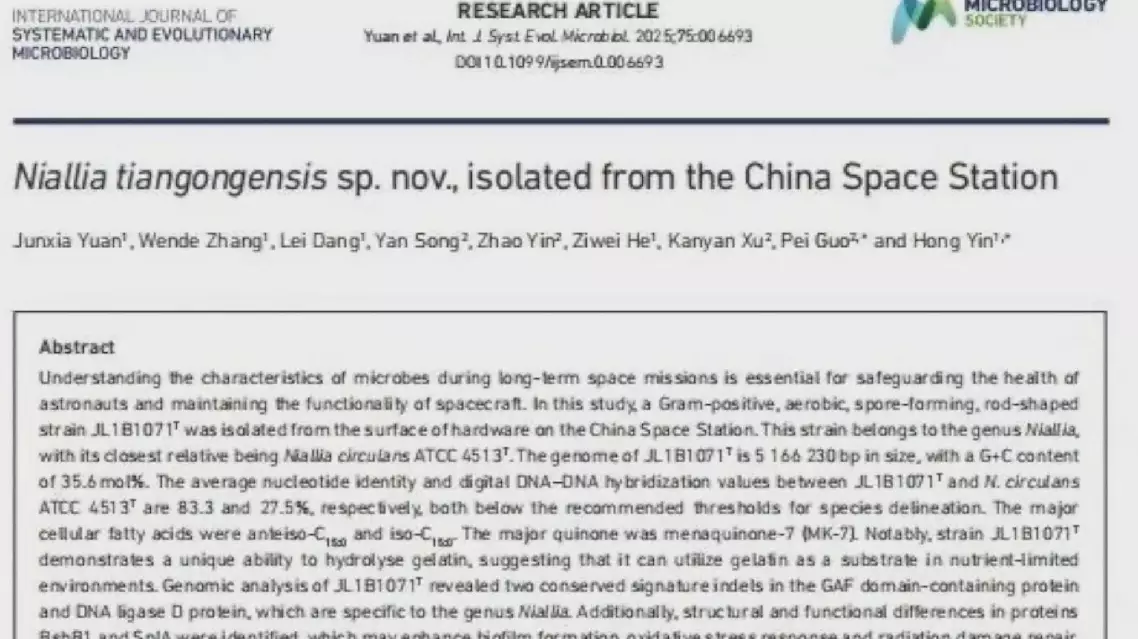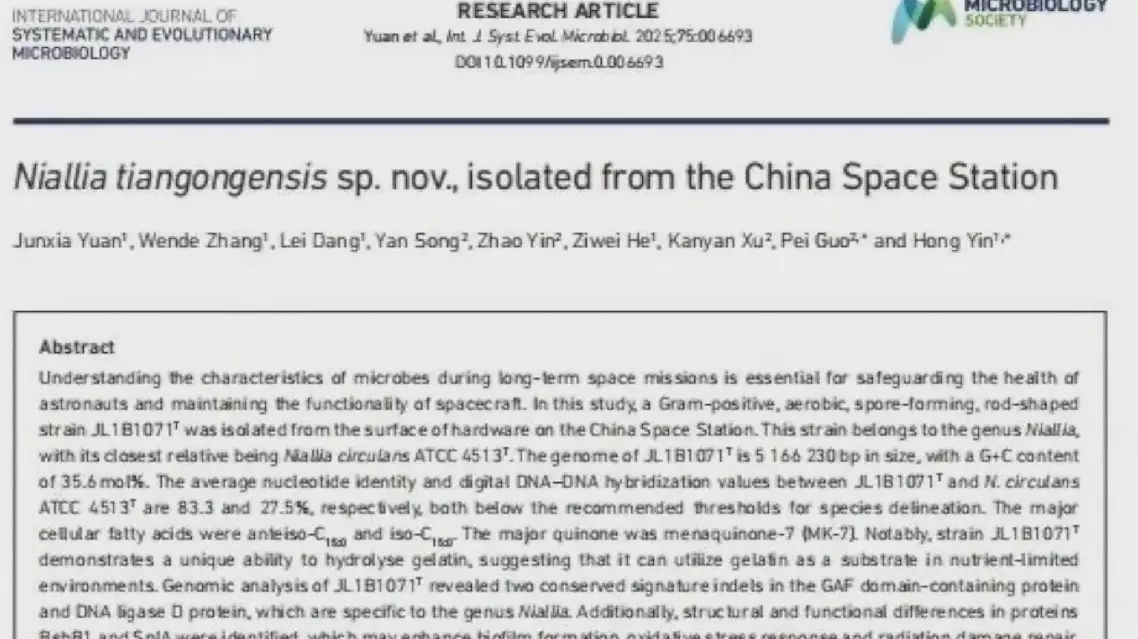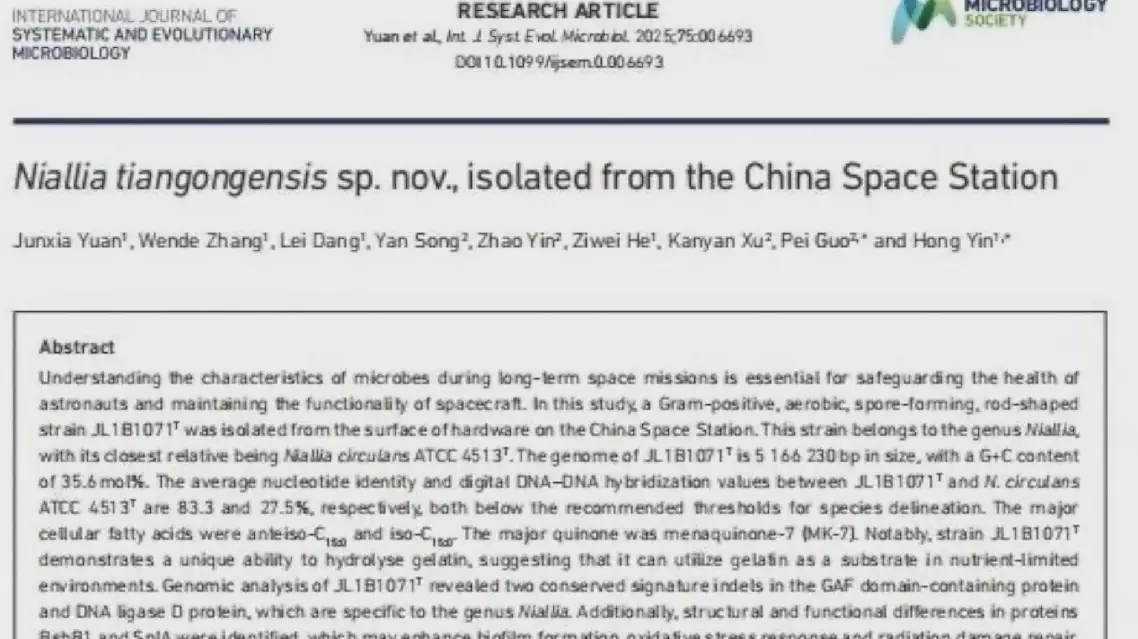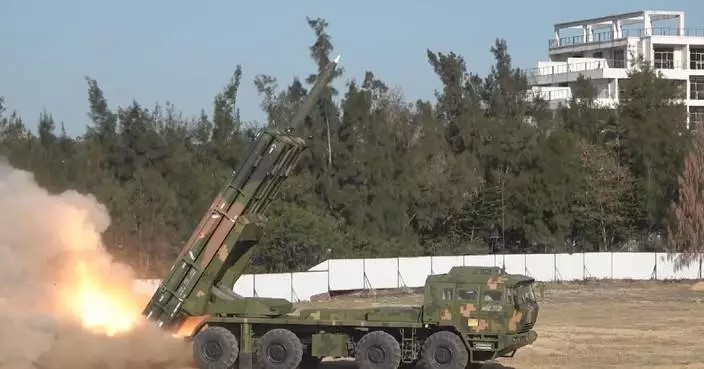Chinese researchers have identified a novel microbial strain discovered on the Tiangong Space Station, marking the first time that a previously unknown species has been reported from the country's orbiting space laboratory, the China Manned Space Agency announced on Friday.
The strain, officially named Niallia tiangongensis, was described in a peer-reviewed paper in the academic journal International Journal of Systematic and Evolutionary Microbiology.
This discovery was made possible through the space station's engineering and aerospace technology experimental program, in which the research team focused on the dynamic changes and safety control of environmental microbes during the long-term operation of the space station.
In May 2023, the Shenzhou-15 astronauts collected microbial samples from the cabin surfaces inside the space station. The samples were stored at low temperatures and later brought back to Earth for analysis.
Through morphological observation, genome sequencing, phylogenetic analysis, and metabolic profiling, researchers confirmed the presence of this new microbial species and that it belongs to the genus Niallia within the family Cytobacillaceae, but is genetically distinct from its closest terrestrial relatives.
Laboratory tests show the Gram-positive, aerobic, spore-forming, rod-shaped strain exhibits structural and functional differences in two types of proteins, which may enhance biofilm formation, oxidative stress response and radiation damage repair, supporting its survival in the space environment.

New microbe discovered on Tiangong Space Station

New microbe discovered on Tiangong Space Station

New microbe discovered on Tiangong Space Station
Recent inclement weather affecting the Gaza Strip has caused significant casualties and widespread property damage, the region's Civil Defense announced Monday.
The authority's spokesman, Mahmoud Basal, said in a statement that due to the adverse weather, multiple habitable buildings in Gaza had completely collapsed.
Strong winds and heavy rains had also severely damaged temporary tents for displaced persons, with over 90 percent of tents either blown down or flooded, further exacerbating the survival challenges for local residents, it said.
The civil defense authority called on the international community to take immediate action and provide emergency assistance to the Gaza people. Hundreds of displacement tents have been damaged by strong winds and heavy rain across the enclave, worsening the already dire humanitarian situation.
"My suffering began from the start of the war and continues until today. We have suffered from displacement, from winter and from the tents. Our tent was flooded during the previous weather depression, and again during this one. Every time it rains, we drown. My children and I try to dig channels to let the water out, but we still end up flooded," said Heba Hasanin, a displaced Palestinian.
"The weather system hit us suddenly last night. There were strong winds and heavy rain, and we were unable to put sand around the tent to keep it from being blown away. As you can see, the tent is just torn fabric, with water pouring in on us. We were truly in a very difficult situation," said Abd Abdulhadi, another displaced Palestinian.
Over the weekend, winter rains lashed the Gaza Strip, flooding displacement camps with ankle-deep water. Gaza's Health Authority said at least 12 people, including a two-week-old infant, have died from hypothermia or weather-related collapses.
Emergency workers have warned residents against staying in damaged buildings. But with much of the territory in rubble, few places remain to take cover from the rain.

Inclement weather causes widespread losses in Gaza: civil defense












